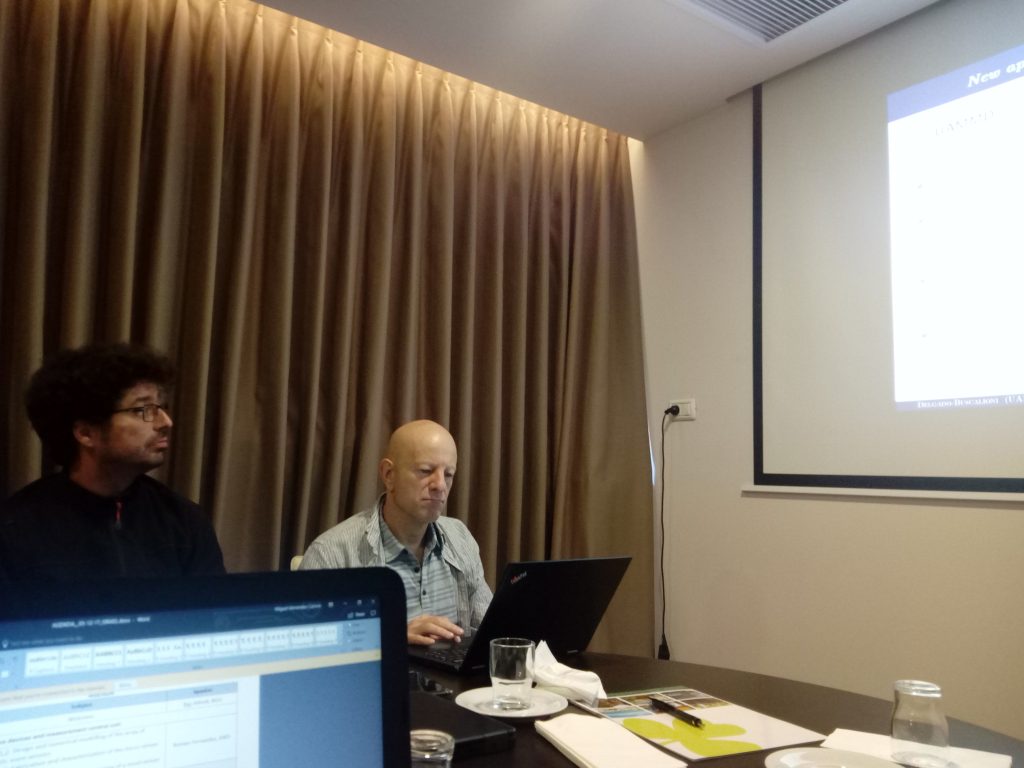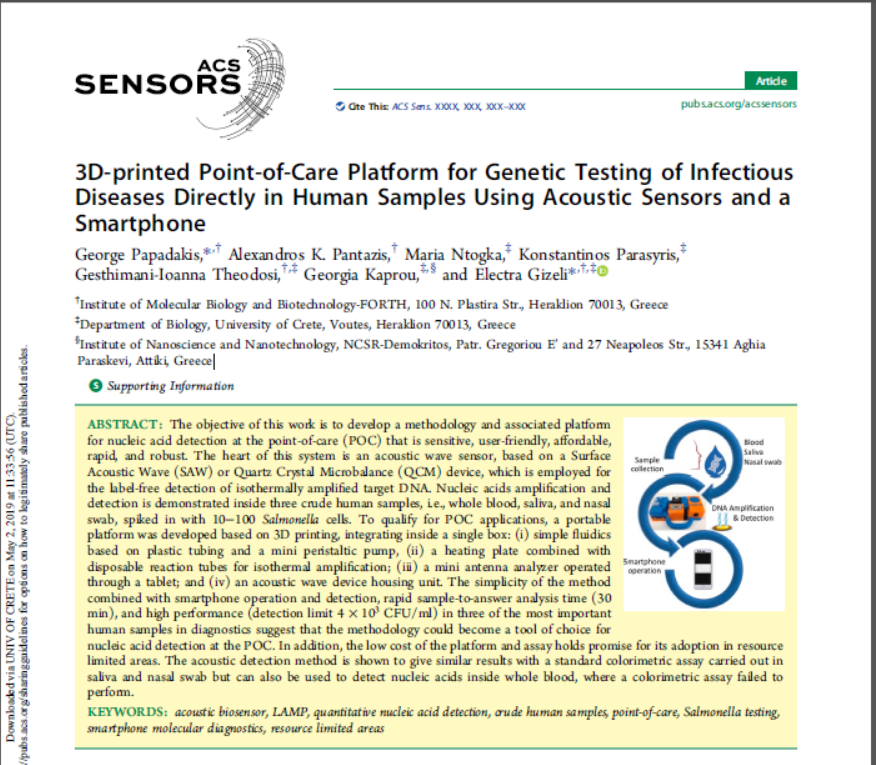The highly prestigious FET-OPEN grant (success rate 4%) was awarded by the European Commission to the project “CATCH-U-DNA”, submitted by 7 partners with Prof. Electra Gizeli as the Coordinator.
The proposed work introduces a radically new line of technology for clinical diagnosis based on the acoustic sensing of non-PCR amplified DNA in serum. The immediate breakthrough idea is replacing PCR in all genetic assays by a more efficient method of equal sensitivity. It builds on novel scientific concepts of foundational nature for biophysics and analytical chemistry exploiting for the first time hydrodynamic molecular properties rather than mass; it offers a long-term vision in cancer diagnosis by introducing the scientific and technological platforms required for making liquid biopsy a reality. It involves the ambitious goal of detecting zM DNA without PCR amplification, a high risk goal associated with a high impact, if successful. Last, it comprises an interdisciplinary consortium expanding beyond the strictly technological disciplines, bringing together condensed matter theoreticians, biophysicists, chemists and clinicians along with the participation of 2 SME’s.
The proof-of-principle will be demonstrated during the detection of circulating-tumor DNA (ctDNA), currently an area perceived by cancer researchers as the “Holy Grail” of future cancer diagnosis, prognosis and treatment. We intend to validate our integrated acoustic platform towards the detection of common mutations occurring in colorectal and lung cancers. It is anticipated that the “CATCH-U-DNA” concept will set the foundations for a simpler, more sensitive and affordable diagnostic method, from which patients in both the developed and developing countries will greatly benefit.
The work will be realized in collaboration with the Institut Curie, France; three Universities: The Autonomous University of Madrid, Spain; Ben Gurion University of the Negev, Israel, and the Medical School from the University of Crete, Greece; and two Industrial Partners: Jobst Technologies, Germany and Advanced Wave Sensors, Spain.





About The Author: Rnavarro
More posts by rnavarro